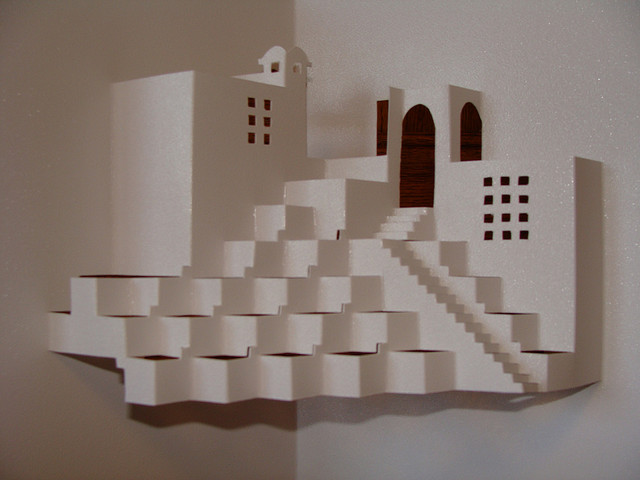11 June 2011
Escher Origamic
M.C. Escher became famous for his mathematically inspired lithographs, woodcuts and mezzotints. The architecture he portrays is impossible – and therein lies the attraction.
His explorations of infinity would be considered by architects as impractical, unfeasible and unworkable.
That, however, does not stop origami(c) artists from having a go at reproducing some of his works. First up, his 1953 engraving Relativity (original left).
Next up his 1938 lithograph Cycle. Essentially an optical illusion it would again appear to defy real life construction.
However, the ingenuity of the origami artist defies your expectations and comes up with something remarkably similar to the original lithograph.
The special way of thinking and the rich graphic work of M.C. Escher has had a uninterrupted influence in the disciplines of science and art.
This (almost) origami is just an example of his work being referenced in popular culture.


His explorations of infinity would be considered by architects as impractical, unfeasible and unworkable.
That, however, does not stop origami(c) artists from having a go at reproducing some of his works. First up, his 1953 engraving Relativity (original left).
Next up his 1938 lithograph Cycle. Essentially an optical illusion it would again appear to defy real life construction.
However, the ingenuity of the origami artist defies your expectations and comes up with something remarkably similar to the original lithograph.
The special way of thinking and the rich graphic work of M.C. Escher has had a uninterrupted influence in the disciplines of science and art.
This (almost) origami is just an example of his work being referenced in popular culture.


















